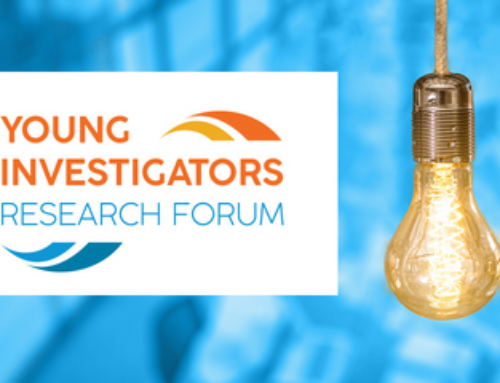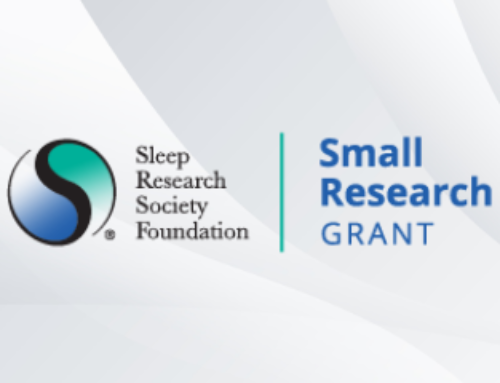Terri E. Weaver, PhD, RN, FAAN, ATSF supports the AASM Foundation as a current member of the AASM Foundation Development Council. Dr. Weaver is dean at the University of Illinois at Chicago College of Nursing and a past AASM board member. She is known for her research on the effect of daytime sleepiness on daily behaviors and assessment of treatment outcomes. As a researcher, Dr. Weaver has received funding from the National Institutes of Health, the National Heart, Lung and Blood Institute and the National Institute of Nursing Research. The AASM Foundation is grateful for Dr. Weaver’s generosity and expertise in the field of sleep medicine.
The AASM Foundation has a new mission statement: Promote discoveries that advance the understanding of sleep for healthier lives. How do you see the nursing profession supporting our new mission?
Nurses have been engaged in sleep research for a very long time. In fact, one of the first sleep laboratories in the country dedicated to research was at the University of Washington School of Nursing. Discoveries made by nurses have advanced the understanding of sleep mechanisms, sleep disruption associated with menopause, sleep in cancer, impact of shiftwork on sleep, and of course, my own research on the impact of sleep disorders and their treatment, especially regarding adherence, on daily functioning. So, nurses have made discoveries that have, in fact, carried out the mission resulting in healthier lives.
Why is clinical sleep research so important to the field of sleep medicine?
Clinical research is necessary to understand whether discoveries made in basic research are translatable not only to humans, but to solving problems that relate to the clinical management of sleep disorders. In some cases, research findings that emanate from basic science and that generate much excitement, are then found not to be executable in the clinical setting. That is why clinical research, and especially clinical trials, both for efficacy and effectiveness are needed. There are also questions that arise in the care of patients with sleep disorders that are important to address as we strive to better understand sleep and improve the quality of life of our patients.
What exciting sleep research is happening at the UIC College of Nursing that you can share with the AASM Foundation’s supporters?
There are many exciting activities in research at the UIC College of Nursing Center for Sleep and Health Research. As Principal Investigator, Dr. Mary Kay Kapella is completing her grant on the efficacy and mechanisms of a behavioral therapy for insomnia coexisting with COPD. This is a critically important study as COPD patients frequently experience insomnia. Dr. Bilgay Iczi Balserak has explored the relationship between sleep parameters and pro-inflammatory biomarkers in pregnant women. Dr. Balserak has found that in this population, regardless of abnormal respiratory events and doctor-diagnosed GDM, increased inflammation was more likely associated with more light sleep, whereas more deep sleep was associated with decreased inflammation. Dr. Anne Fink’s laboratory is examining how sleep disorders impact the cardiovascular system. Ongoing experiments define the mechanisms linking disrupted sleep with the development of high blood pressure. Animal work currently underway include defining the impact of experimental shift-work on circadian patterns in blood pressure and heart rate variability and determining how neuronal networks in the pons regulate cardiorespiratory responses to experimental sleep apnea.
Investigating pharmacological treatments of sleep-related breathing disorders, Dr. Michael Calik’s published results showed that dronabinol, a cannabinoid, attenuates reflex apnea and increases upper airway activity in rats and worked with Dr. David Carley to develop a cannabinoid treatment for obstructive sleep apnea now under development. In addition, Dr. Irina Topchiy, who is also interested in the neurophysiology of sleep and sleep related respiratory disorders has researched the role of pontine structures of the brain in respiratory regulation. Part of this research determines functionally distinct areas and neurotransmitters involved in the regulation of respiration and REM-sleep events within pedunculopontine tegmentum (PPT), which participates in a wide range of state-regulating and behavioral processes. With colleagues at UIC, I have also recently published on the association of white matter compromise with residual sleepiness in highly adherent CPAP users. So, you can see that there is an abundance of both animal/bench and clinical research activity at the UIC College of Nursing that will promote sleep and health.
Do you have any advice for junior investigators looking to advance their careers in sleep and circadian research?
I believe finding a good mentor is paramount as well as developing a team. Ideally, that would be an interprofessional team who can examine issues from various interdisciplinary perspectives. Most important is listening to the advice of the mentor. So often young investigators believe they know the right path to take, but seasoned investigators have been successful for a reason and benefitting from their guidance is critical. I say this as a past department chair and now as a dean. The ones who fail are the ones who don’t listen.






